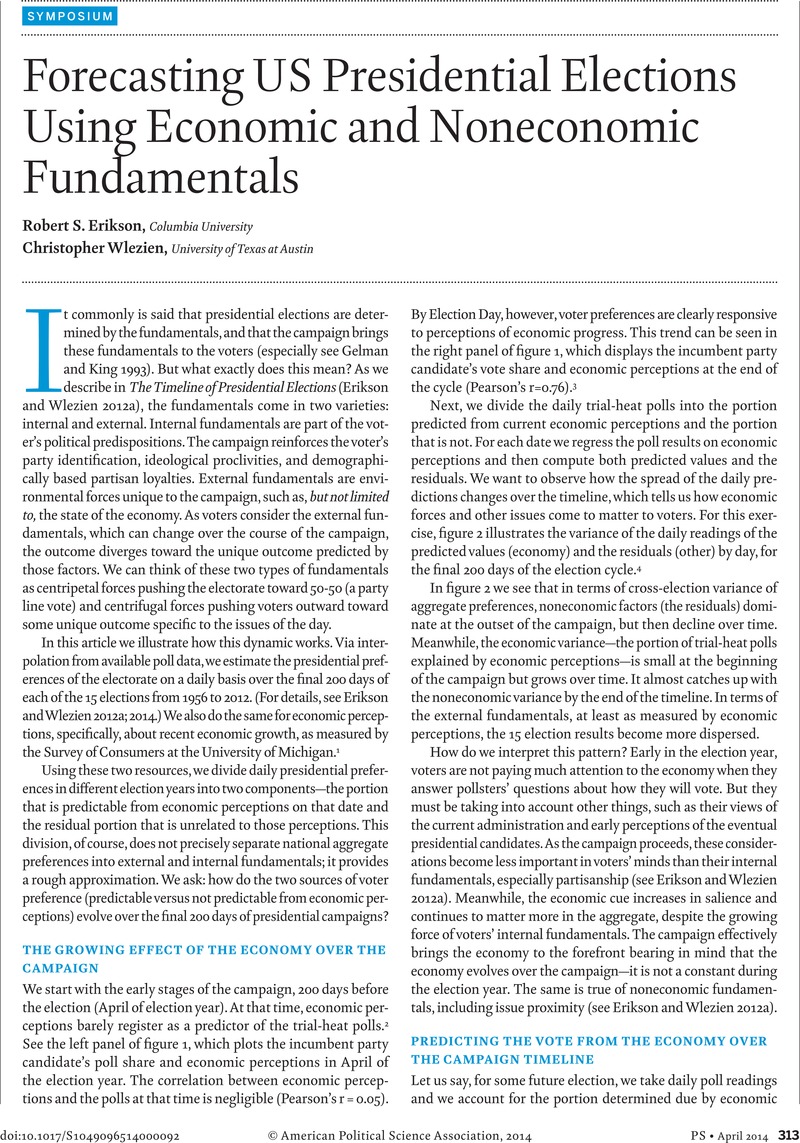Crossref Citations
This article has been cited by the following publications. This list is generated based on data provided by Crossref.
Lewis-Beck, Michael S.
and
Dassonneville, Ruth
2015.
Forecasting elections in Europe: Synthetic models.
Research & Politics,
Vol. 2,
Issue. 1,
You, Quanzeng
Cao, Liangliang
Cong, Yang
Zhang, Xianchao
and
Luo, Jiebo
2015.
A Multifaceted Approach to Social Multimedia-Based Prediction of Elections.
IEEE Transactions on Multimedia,
Vol. 17,
Issue. 12,
p.
2271.
Lewis-Beck, Michael S.
Nadeau, Richard
and
Bélanger, Éric
2016.
The British general election: Synthetic forecasts.
Electoral Studies,
Vol. 41,
Issue. ,
p.
264.
Tien, Charles
and
Lewis-Beck, Michael S.
2018.
Congressional Midterm Forecasts: A Trump Economic Difference?.
The Forum,
Vol. 16,
Issue. 4,
p.
477.
Easaw, Joshy
Fang, Yongmei
and
Heravi, Saeed
2023.
Using polls to forecast popular vote share for US presidential elections 2016 and 2020: An optimal forecast combination based on ensemble empirical model.
Journal of the Operational Research Society,
Vol. 74,
Issue. 3,
p.
905.
Highton, Benjamin
and
Stone, Walter J.
2024.
“Extending the Referendum Model of Presidential Election Outcomes: Both Candidates Matter”.
American Politics Research,
Vol. 52,
Issue. 1,
p.
3.
Fry, John
Hastings, Thomas
and
Binner, Jane
2025.
An options-pricing approach to forecasting the French presidential election.
Journal of the Operational Research Society,
Vol. 76,
Issue. 1,
p.
167.



